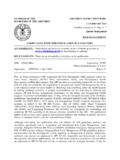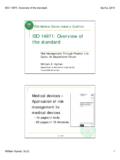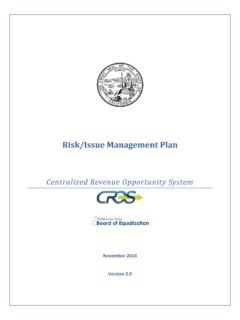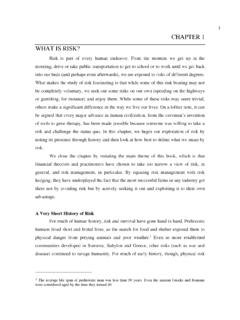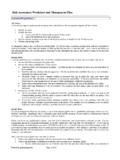Transcription of Risk Management: Pro-active Principles for Project Success
1 Risk management : Pro-active Principles for Project SuccessLiz MarkewiczDon RestianoWhat is a RiskAccording to the Defense Acquisition University: Risk is a measure of the potentialinability to achieve overall program objectives within defined cost, schedule and technical constraints ISO Defines Risk as the: combination of the probability of an event and its consequence What is a RiskIn other words: Risk is anything that couldcause a negative cost, schedule, or performance impact Must have a probability of less than100%; anything with a probability of 100% isn t a risk, it s an issue or a risks provides an opportunity to avoid negative impactsRisk Vocabulary risks Problems WorriesRisk VocabularyRisk is.
2 The PossibilityOf Suffering A Loss,the uncertainty of attaining a future goal it hasn t happened Risk has Two Elements probability : the chancethat an event will occur. If it s a sure thing, then it s a problem (not a risk) Consequence: A negative impact on Cost, Schedule, Performance or a combination of all then probability :The likelihood thatan event will occur ( <100% ).Undesirable Consequence:The negative impact if the risk occurs: Cost will increase, Schedule will be delayed or Performance will be RISK is A Problemis a negative consequence with a certain, or almost certain probability of occurrence.
3 It is not a risk Problems need to be dealt with via corrective action but not as part of Risk management . They can notbe Mitigated or Avoided Worriesare small scale, routine, day-to-day uncertainties that your normal processes should account for ( ; equipment calibration and maintenance cycles or System upgrades) Worries are Not considered risks Standard operating procedure usually handlesRisks can be avoided Problems can tWhat is Risk management ? A proactive, customer-focused approach to manage uncertainty Risk management is a continuous, closed loop process that captures new risks as they emerge, tracks the status of already identified risks , retires risks through successful actions, or realizes risks through unsuccessful actions Risk management is a systematic process to ID, assess & manage risksWhy Use Risk management ?
4 S*#! happens : Projects often fail because of unexpected or unmitigated known unknown The results of an Aberdeen Group study showed that manufacturers without best-in-class risk management procedures were twiceas likely to suffer a major impact. Industry Week, Blanchard, Feb 2009 Failure to manage risks usually leads to: Budget Impacts - increased cost, Schedule Impacts - delays, Performance Impacts - defects Career & Business Impacts - unhappy management and customers. Risk management contributes to Project Success Proactive not Reactive - An ounce of prevention is worth a pound of cure ID what couldhappen & you can try to avoid rather than brace for impact No one is blindsidedProperly managed, risks can be controlledCompanies can t afford to failWhy Use Risk management ?
5 Risk management helps optimize resource utilization Identifies what could go wrong Assesses probability & negative Consequence of it occurring Develops potential mitigation, its cost, and potential to reduce the risk Allows comparison: Mitigation vs. Wait and See Allocating resources to one risk vs. another Successful Mitigation plans minimize cost, schedule & performance problemsRisk management supports knowledge based decision makingSuccessful businesses spend $ on activities that produce Risk management Process We ll go thru the basic approach & concepts and then follow this up with a case study concerning reliability and the application of risk managementThe Risk management Process 5 steps - derived from a process developed by the Defense Acquisition University.
6 And other sources such as Carnegie Mellon s Software Engineering Institute and the Open Systems Initiative. Process and Prioritize and Implement Risk Handling and ReportRisk management is an ongoing process, not an event1 Plan RiskMgmnt Approach2ID Risks2ID Risks3 Assess & Prioritize4 RiskHandling5 Track & ReportNew Project and/or Process ImprovementStep 1 The Risk management PlanThe blueprint Defines the structured, disciplined process: the who, what, how and when that is required to identify and manage risk Responsibilities and Stakeholders Oversight and Reporting requirements Selected Tools Parameters for risk categorization Thresholds that trigger mitigation activity Standardized scales for probability & Consequence assessment May tailor for Projects Consistently apply across entire Project for the duration Does notidentify the risksPlan Provides the Framework.
7 NOT the risksStep 2: Risk Identification What are all the risks to the Project or program Cost? Schedule? Requirements? Suppliers? etc Techniques for Risk ID can include: Brainstorming Expert interviews, Lessons Learned Failure Modes and Effects Analyses (FMEAs) Staffing Evaluations Review Requirements Are there any TBDs? Are any requirements inadequately defined? Are any requirements very difficult to meet? Filter out the Problems and the Noise Assign a Risk Owner Ownership is based on who can most likely effect a positive outcome, not by who is most affected by the consequencesMake Risk ID an ongoing practice, not an eventIDENTIFYStep 2: Risk IdentificationDevelop a Risk Statement for each A Good Is conciseand quantitative Captures the consequencein the statement Uses an IF (conditional probability ) THEN (consequence)Step 3 - Risk Assessment and PrioritizationAssess each risk.
8 What s the probability (Pf) & Consequence (Cf) of each? Standardize Measure of probability (Pf) & Consequence (Cf): Should be defined in the Risk management Plan Specific Categories for Pf and Cf Ensures risks are normalized (a high risk is a high risk is a high risk) Pfand Cf can be Qualitative (Hi/Med/Low) or Quantitative Quantifying Consequence is preferable Puts ceiling on mitigation spending Generates more proactive response to riskStep 3 - Risk Assessment and PrioritizationPrioritize: Which pose the greatest threat to the Project ?
9 The Risk Factor (Rf) is an evaluation of a Risk s probability of occurring and the severity of consequence to determine its overall seriousness ( Pf X Cf)= Rf Prioritizing = Ranking all risks by Risk Factor Get consensus of assessment from all stakeholders Apply reality check Reassess periodically or when conditions change Are your actions producing the expected results?Five Approaches Avoidance:Adopt a baseline that doesn t allow the risk to occur. Ex: Changing requirements while still meeting end product needs. Transfer:Require a 3rdparty, (supplier, subcontractor, etc) to share the consequence if the risk is realized.
10 Ex: Reallocating requirements to a party that has more control over the risk area May be implemented via contract penalties/incentives, insurance policies, etc Assumption:Risk is acknowledged and accepted, but no actions are taken. ; Cost to mitigate > impact value; have no control over the risk, strategy for a low risk. Resources may be set aside in reserve to absorb the impact of the risk should it occur Contingency Planning:Identify activities to invoke if the risk is realized. ID Contingencies when there s insufficient confidence in the mitigation activities, or when there are no viable activities that could reduce or control a risk Mitigation:Define & Implement actions to control/minimize risk.


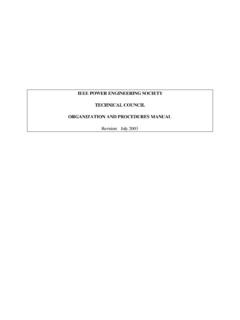

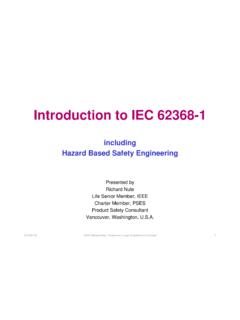



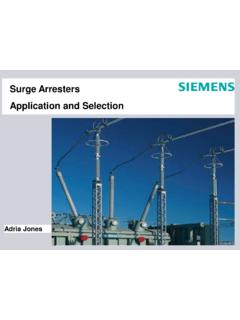
![Wind Farm Electrical Systems.pptx [Read-Only] - IEEE](/cache/preview/8/3/4/a/7/7/3/b/thumb-834a773be91d444a92c541b6bc1b2269.jpg)



